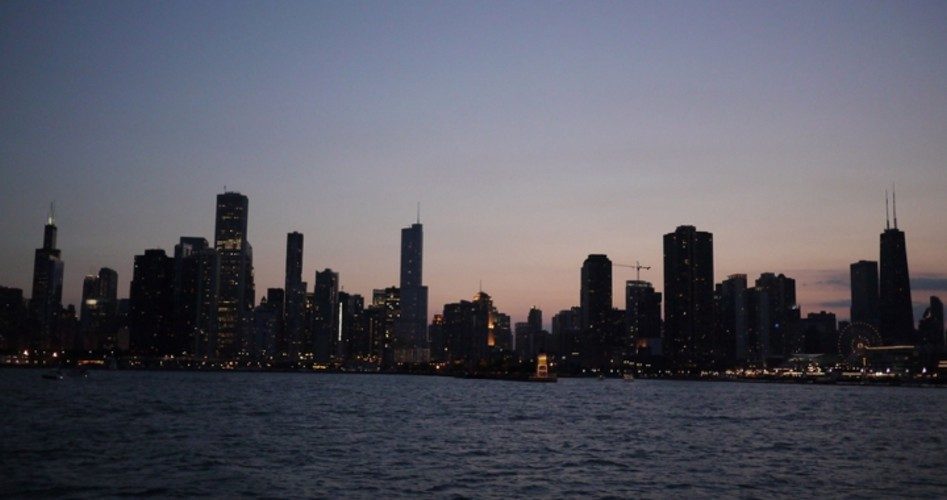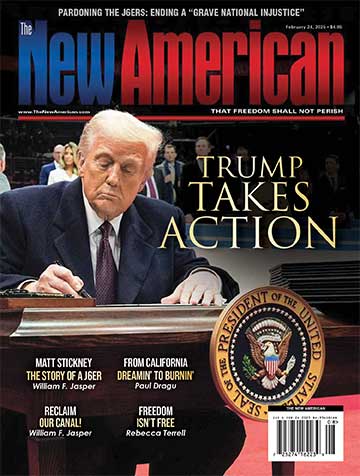
Data released by the Chicago Police Department reveals that 2016 was the city’s deadliest year in 20 years, proving once more that strict gun laws do little to reduce gun violence and in fact turn law-abiding citizens into prey for criminals.
CNN reports on the data, “The city saw a surge in gun violence in 2016: 762 murders, 3,550 shooting incidents, and 4,331 shooting victims, according to a statement released by the department on Sunday.”
What’s more is that Chicago’s second deadliest year in 20 years was 2015, meaning that gun violence is steadily increasing as the United States has witnessed a decline in homicide rates overall. Earlier this year, the FBI revealed that the U.S. homicide rate was at a 51-year low.
Zero Hedge notes that if Chicago were a country, these figures would rank it as the 201st most dangerous out of the 218 countries in the world tracked by the United Nations Office on Drugs and Crime.
In just the last week of 2016 alone, city police investigated 27 shooting incidents, 12 of which were fatal.
Chicago’s struggles with gun violence are compounded by the fact that its police close just one-fifth of their murder cases, a third of the national average, and the city is dealing with a shortage of police. The Chicago Tribune reports that nearly 600 officers have left the department since Mayor Rahm Emanuel took office in 2011.
Gun violence against police officers doubled in 2016 as well, a phenomenon that former Chicago Police Superintendent Garry McCarthy attributes to the rise of the Black Lives Matter movement.
In an interview with John Catsimatidis on AM 970 in New York, McCarthy blamed the anti-police protests in cities such as Baltimore, Ferguson, and Charlotte for creating a “political atmosphere of anti-police sentiment,” according to The Hill.
Current police superintendent Eddie Johnson made similar assertions, noting that the increase in gun violence is a result of “criminals emboldened by the current anti-police climate nationwide.”
McCarthy opines on the futility of the BLM movement, which is allegedly aimed at saving black lives but yet has not taken issue with the loss of black lives in Chicago at the hands of non-police officers.
“So what’s happening, and this is ironic, is that a movement with the goal of saving black lives at this point is getting black lives taken because 80 percent of our murder victims here in Chicago are male blacks,” McCarthy said. “Less than half of 1 percent of all the shootings in this city involve police officers shooting civilians.”
Meanwhile, as Chicago continues to witness an increase in gun violence, the city has some of the toughest gun laws in the country. Even the New York Times had to admit the failure of Chicago’s strict gun laws in a 2013 article, in which Monica Davey wrote:
Not a single gun shop can be found in this city because they are outlawed. Handguns were banned in Chicago for decades, too, until 2010, when the United States Supreme Court ruled that was going too far, leading city leaders to settle for restrictions some describe as the closest they could get legally to a ban without a ban. Despite a continuing legal fight, Illinois remains the only state in the nation with no provision to let private citizens carry guns in public.
And yet Chicago, a city with no civilian gun ranges and bans on both assault weapons and high-capacity magazines, finds itself laboring to stem a flood of gun violence that contributed to more than 500 homicides last year and at least 40 killings already in 2013.
Of course, gun rights advocates have long understood that strict gun laws impact only law-abiding citizens who would obey the gun laws and would, therefore, be unlikely to commit crimes with guns in the first place. Criminals, on the other hand, do not obey gun laws and as such, strict gun laws do nothing to stop these individuals from committing gun-related crimes
“The gun laws in Chicago only restrict the law-abiding citizens and they’ve essentially made the citizens prey,” said Richard Pearson, executive director of the Illinois State Rifle Association.
Proof of this lies in the fact that the majority of the deaths and shooting incidents last year occurred in just five neighborhoods on the city’s South and West sides, where gangs are most active. Fox News reports, “Police said the shootings in those areas generally weren’t random, with more than 80 percent of the victims having previously been identified by police as more susceptible because of their gang ties or past arrests.”
In contrast, the United States as a whole has enjoyed a significant decline in homicide rates, even as legal gun ownership has increased dramatically. Clearly, legal guns are not the problem.
Unfortunately, the city’s response to the 2016 gun violence continues to be further gun control. Illinois Gov. Bruce Rauner passed a law in August that imposes strict penalties on those without a gun-owner identification card who bring a gun into the state with the intent to sell it.
Police and city officials are hopeful that the law will stop the influx of illegal guns from outside of the city after police recovered 8,300 illegal guns in 2015.
According to ABC 7 Chicago, the police department has released its own plan to address the rising gun violence in 2017. The strategy includes addressing the flaws in sentencing guidelines for repeat gun offenders, who are behind most of the city’s gun violence; launching new intelligence centers on the south and west sides staffed by crime analysts and district intelligence officers; and implementing community engagement programs.
The Chicago Police Department will be adding approximately 1,000 officers to the department by 2018, and will be equipping every officer with a body camera by the end of 2017 to increase transparency in an effort to improve relations between police and the community.
Appearing before approximately 100 new police cadets last month, Mayor Emanuel vowed to devote more resources to the city’s police. “This place is going to be busting at the seams, which is a good thing,” he said. “More resources, better training going into our police department, so we can provide our residents and our neighborhoods and our communities throughout the city of Chicago the type of support they need.”



